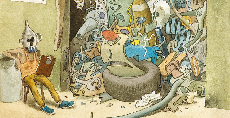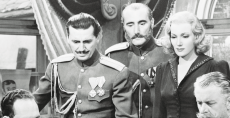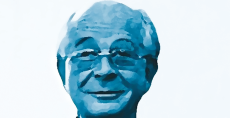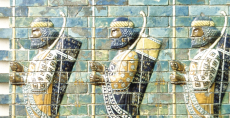sommario 3/2023
 Editoriale
Editoriale
La crisi della globalizzazione, l’irresistibile sviluppo dell’Ict e l’avvento dell’intelligenza artificiale mettono sempre più in discussione i tradizionali modelli del vivere economico e sociale, favorendo l’affermazione di nuovi sistemi produttivi, culturali e valoriali destinati, da qui ai prossimi decenni, a ridisegnare i rapporti di forza tra entità statuali in competizione e a trasformare radicalmente il mondo così come oggi lo conosciamo. In tale contesto, la sfida per i governi non riguarda solo l’individuazione dei fattori del cambiamento ma anche la loro gestione, in termini di messa a frutto delle opportunità sottese e di mitigazione dei rischi. ...
|

 Mario Caligiuri
Mario Caligiuri
 Cancel culture. Breve anatomia del fenomeno
Cancel culture. Breve anatomia del fenomeno
La cancel culture sembra dilagare. È un fenomeno passeggero o destinato a lasciare tracce profonde in una società che sta ibridando uomo e macchina? In ogni caso, rappresenta il sintomo di una crisi che investe la Storia, perché gli eventi non vengono contestualizzati, e l’idea di tolleranza sulla quale si basa la società aperta dell’Occidente. L’intelligence deve confrontarsi con questo fenomeno in quanto può essere espressione di quelle “minoranze creative” in grado di rifondare la società.
 Mario Caligiuri
Mario CaligiuriCancel Culture. Disapproving rather than Contextualising
Cancel culture seems to spread more and more. Is it ephemeral? Or is it leaving traces in our society, where the hybridisation between humans and devices has been taking place? In any case, cancel culture is seen as the symptom of a crisis affecting history, because events are not contextualised. In this way the idea of tolerance, on which Western open societies are based, is in danger. Intelligence must deal with this phenomenon as it hosts those ‘creative minorities’ who are able to rebuild society.
|

 Carlo Bordoni
Carlo Bordoni
 La Scuola di Francoforte. Un secolo dalla fondazione
La Scuola di Francoforte. Un secolo dalla fondazione
La Scuola di Francoforte, nata un secolo fa, ha rappresentato uno dei tentativi più complessi di analisi della società con la Teoria critica, coniugando marxismo e psicanalisi. Adorno, Horkheimer, Marcuse, Fromm e Benjamin hanno segnato il Novecento con la loro carica “negativa” che intendeva portare in primo piano la cultura in quanto elemento strutturale della società, al pari dell’economia. Rimasta sempre sul piano teorico senza mai entrare nell’azione politica (il suo slogan era “Non collaborare”), ha ispirato la contestazione studentesca del Sessantotto, ma anche l’evoluzione dell’arte e della cultura di massa.
 Carlo Bordoni
Carlo BordoniA Century of the Frankfurt School (1923-2023)
A century ago the Frankfurt School was founded. It has been one of the most complex attempts at analysing society. Critical theory combined Marxism and psychoanalysis. Adorno, Horkheimer, Marcuse, Fromm and Benjamin marked the 20th century with their ‘negative’ philosophy which focused on culture seen as a structural element of society, such as the economy. The Frankfurt School always remained on a theoretical level without ever entering into political action (its slogan was “Do not collaborate”) and inspired the student protests of 1968, but also the evolution of art and mass culture.
|

 Paolo Chirafisi
Paolo Chirafisi
 Geopolitica cognitiva. Dominare le menti e i cuori
Geopolitica cognitiva. Dominare le menti e i cuori
Nei conflitti dei prossimi decenni si farà largo un nuovo modo d’intendere la guerra che, sempre più, assumerà una dimensione cognitiva. Occorrono nuovi paradigmi interpretativi, soprattutto culturali, a supporto di un’intelligence destinata a evolvere verso modelli più sofisticati e predittivi. Il conflitto russo-ucraino ha disvelato alcune criticità nella capacità di risposta dell’Occidente ma ha anche fornito l’occasione per capire come una serie di artefatti culturali assurti a pedagogia nazionale possano divenire il perno storico per un’aggressiva politica di espansionismo geografico.
 Paolo Chirafisi
Paolo ChirafisiCognitive geopolitics: mastering minds, mastering hearts
In the conflicts of the coming decades, a new way of understanding warfare will emerge, increasingly taking on a cognitive dimension. New interpretative paradigms, especially cultural ones, are needed to support an intelligence that is destined to evolve towards more sophisticated and predictive models. The Russo-Ukrainian war has revealed some shortcomings in the West’s response capabilities, but it has also provided the opportunity to understand how a series of cultural artifacts that have risen to national pedagogy can become the historical keystone for an aggressive policy of geographic expansionism.
|

 Giorgio Cella
Giorgio Cella
 Il revival neopagano nel mondo slavo. Simbologie, miti e divinità
Il revival neopagano nel mondo slavo. Simbologie, miti e divinità
Nel conflitto in Ucraina esiste ancora un’area poco esplorata, una zona d’ombra, un ultimo confine: quello religioso, sacrale e identitario neopagano. Ci riferiamo al ritorno degli antichi culti slavi, al dio Perun, anello di congiunzione di molte fasi di questa secolare storia. Tracce di neopaganesimo si ritrovano nell’unità Azov come nella compagnia militare privata Wagner. Un excursus sul lato più sottile di una guerra che chi scrive ha definito esistenziale: lo è ancor di più se nell’equazione s’inserisce anche tale aspetto che, tra passato e presente, ritorna come un fiume carsico.
 Giorgio Cella
Giorgio CellaThe Neopagan Revival in the Slavic World: Symbols, Myths, and Deietes
In the Russo-Ukrainian war there is still an unexplored area, a shadow zone, a final frontier: the religious, sacred, and identitarian realm of Neopaganism. This entails a return to the ancient Slavic cults and the god Perun, a connecting link in the secular history of these populations. Traces of Neopaganism can be found both in the Azov unit and in the Wagner Pmc. An excursion into the subtler side of a conflict defined as existential: it becomes even more so when this aspect is included in the equation, resurfacing like a karst river between past and present.
|

 Andrea Manciulli
Andrea Manciulli
 La minaccia jihadista nel Mediterraneo allargato. Possibili strategie di contrasto
La minaccia jihadista nel Mediterraneo allargato. Possibili strategie di contrasto
Le minacce jihadiste, nello spazio geopolitico del cosiddetto “Mediterraneo allargato”, non sono di certo scomparse ma hanno solo cambiato forma e la mutazione, in futuro, sarà ancor più rapida e imprevedibile: proprio per questo occorre elaborare delle strategie di prevenzione e contrasto in ambito sia nazionale sia a livello di Alleanza Atlantica.
 Andrea Manciulli
The Jihadist Threat in the Extended Mediterranean. Possible Counterstrategies
Andrea Manciulli
The Jihadist Threat in the Extended Mediterranean. Possible Counterstrategies
The jihadist threats in the geopolitical space of the so-called ‘extended Mediterranean’ have certainly not disappeared, but have only changed shape and their mutation in the future will be even faster and more unpredictable. That is why it is necessary to develop prevention and counter strategies both at the national level and within the framework of the Atlantic Alliance.
|

 Manlio Graziano
Manlio Graziano
 Spostamenti progressivi in Medio Oriente
Spostamenti progressivi in Medio Oriente
Da 70 anni, in Medio Oriente si ripete sempre lo stesso scenario. Gli attori locali continuano a combattersi senza mai riuscire a imporsi gli uni sugli altri e il combustibile che continuano a gettare sul fuoco è usato dalle grandi potenze per alimentare le loro rivalità per procura. Così, la regione è sempre stata il riflesso più o meno fedele dei rapporti tra le grandi potenze. Il declino relativo americano ha aperto dei vuoti che molti hanno cercato di riempire espandendo l’entropia regionale. Alla fine, la Cina potrebbe trarne i maggiori vantaggi. Almeno fino alla prossima grande crisi.
 Manlio Graziano
Manlio GrazianoProgressive Movements in the Middle East
For seventy years, the same scenario has been repeating itself in the Middle East. In their inconsistency, local actors continue to fight without ever being able to prevail over each another. The combustible they keep throwing into the fire is used by the major powers to fuel their proxy rivalries. Thus, the Middle East has always been a more or less faithful reflection of the relationships between the great powers. The relative decline of the United States has created voids that many have tried to fill by expanding regional entropy. In the end, China could derive the greatest advantages from it. At least until the next major crisis.
|

 Alessandro Colombo
Alessandro Colombo

Al Paradiso e ritorno. Le metamorfosi della sicurezza nel XXI secolo
“Sicurezza” è una delle parole-chiave del linguaggio politico, diplomatico e strategico. Ma il suo significato cambia continuamente nel tempo. Mutamenti di grande portata sono avvenuti proprio negli ultimi quattro decenni, dalla fase di declino del sistema internazionale bipolare a oggi. E lo hanno fatto, soprattutto, in una successione rapidissima, che espone tanto gli studiosi quanto gli operatori della politica estera e di sicurezza alla necessità di adattare continuamente le proprie categorie cognitive per non incorrere in pericolose incomprensioni o, peggio, in scelte avventate e controproducenti.
 Alessandro Colombo
Alessandro ColomboTo Paradise and Back. Security Transformations in the 21st Century
‘Security’ is one of the key words in political, diplomatic and strategic language, however its meaning is constantly changing over time. Significant transformations have taken place in the last four decades, from the decline of the bipolar international system to the present day, and they have done so very rapidly. This exposes both scholars and practitioners of foreign policy and security to the need to continuously adapt their cognitive categories in order to avoid dangerous misunderstandings or, worse, hasty and counterproductive choices.
|

 Dario Antares Fumagalli
Dario Antares Fumagalli
 Implicazioni strategiche e politiche della realtà aumentata
Implicazioni strategiche e politiche della realtà aumentata
Le nuove Ict abilitano inediti modelli d’interazione, conflittuale o pacifica, tra esseri umani, modificando le relazioni di potere e i pattern tattici, in campo tanto commerciale quanto politico. L’articolo, attraverso lo strumento della suggestione, esplora alcune potenziali implicazioni della diffusione di soluzioni basate sulla realtà aumentata e ne trae conclusioni in merito all’opportunità di orientare le politiche industriali nazionali al fine di ricavare un ruolo di primo piano nella supply chain di produzione delle piattaforme hardware necessarie all’utilizzo di questa tecnologia.
 Dario Antares Fumagalli
Dario Antares FumagalliStrategic and Political Consequences of the Augmented Reality
New Icts pave the way to new models of both conflictual and peaceful interactions among human beings as they modify power relations and tactical patterns in both the commercial and political fields. The article introduces the tool of ‘imagination’ which is thought to be useful to explore some possible effects of the dissemination of solutions based upon augmented reality. Furthermore, it draws conclusions regarding the opportunity to redefine our national industrial policies. We should play a leading role in the production supply chain of the hardware platforms that are needed for the use of this technology.
|

 Luigi Loreto
Luigi Loreto
 Storiografia e war-game
Storiografia e war-game
L’unica possibilità per uno storico di essere presente a Waterloo è di giocare un war-game. L’articolo analizza il rapporto tra storiografia e war-game, argomento che – a differenza della storia del gioco di guerra come tale – raramente ha formato oggetto di specifica attenzione. Per lo storico il war-game rileva sotto due profili. Da un lato, rappresenta una fonte documentale, specie rispetto alla ricostruzione delle grand strategies. Dall’altro, pur con i necessari limiti e cautele di impiego, integra uno strumento epistemologico, fornendo un parametro di sperimentabilità concreta del fenomeno bellico.
 Luigi Loreto
Luigi LoretoHistoriography and War-Game
There is only one way for the historian to witness the battle of Waterloo: to play a war-game. The article analyses the relationship between historiography and war-games, which has rarely been discussed, unlike the history of war-games as such. For the historian, the war-game plays a relevant role for two reasons. On the one hand, it is a documentary source material, especially in order to reconstruct grand strategies. On the other hand, even if there is some limits and prudence is needed, the war-game enriches the epistemological tools as it provides criteria for concretely testing the phenomenon of war.
|

 Umberto Broccoli
Umberto Broccoli
 La difesa di Roma. Quando Roma non era
La difesa di Roma. Quando Roma non era
Roma e le prime mura. Iniziano a costruire i re, si prosegue nella repubblica. In guerra contro Veio: un’altra operazione militare speciale. I galli urlano e i romani fuggono. Trattative di pace col trucco. Oche, statue, senatori: leggende o realtà? Brenno contro Furio Camillo e la storia di Roma prima del suo dominio incontrastato sul mondo, quando le mura erano necessarie. Poi Roma non ne avrà più bisogno per sette secoli e imporrà la sua pace. Ancora oggi è possibile osservare i resti di quelle più antiche della città, accanto alla Stazione Termini.
 Umberto Broccoli
Umberto BroccoliThe Defense of Rome, when Rome Was Not Here Yet
The early Roman walls. Construction begins under the kings and continues during the Republic. The war against Veio: a special military operation. The Gauls attack and the Romans flee. Deceptive peace negotiations. Geese, statues, senators: legends or reality? Brennus against Furius Camillus and the history of Rome before its undisputed dominion over the world, when walls were necessary. Then Rome would not need defenses for seven centuries and would impose its peace. Even today, it is possible to admire the oldest walls of the city, next to Termini Station.
|

 Sergio Valzania
Sergio Valzania
 La crisi dell’Amethyst. Le tracce di una diplomazia segreta
La crisi dell’Amethyst. Le tracce di una diplomazia segreta
La crisi della fregata Hms Amethyst tra il 20 aprile e il 31 luglio 1949 segna la fine della stagione dei trattati “ineguali” imposti alla Cina dalle potenze occidentali e costituisce un perfetto esempio dell’utilizzazione di un episodio bellico per stimolare e poi mascherare un efficace dialogo diplomatico. Dietro la fuga della nave dallo Yangtse si cela la fine dell’esperienza coloniale inglese in Estremo Oriente, ma la rappresentazione che ne venne data a Londra, con parate lungo le strade e la consegna di decorazioni, fu quella del conseguimento di una grande vittoria.
 Sergio Valzania
Sergio ValzaniaThe Amethist Incident. The Traces of a Secret Diplomacy
The incident of the Hms Amethyst between 20th April and 31st July 1949 stressed the end of the season of unequal treaties imposed on China by the Western powers and it is a perfect example of the use of a war episode to stimulate and then hide an effective diplomatic dialogue. The end of the English colonial experience in China was hidden behind the escape of the Amethyst from the Yangtze, but London proposed the narrative of the achievement of a great victory, along with street parades and honours.
|

 Mauro Canali
Mauro Canali
 Il futurismo e il suo tempo
Il futurismo e il suo tempo
Il movimento futurista, fondato da Filippo Tommaso Marinetti, avrebbe voluto far piazza pulita di ogni precedente forma espressiva, celebrando il culto della modernità e della tecnologia. Esso fu il modello di tutte le successive avanguardie e interessò, tra l’altro, letteratura (poesia), teatro, pittura, scultura, architettura, cinema, scenografia e musica. Nel primo Manifesto, pubblicato inizialmente su quotidiani nazionali e apparso definitivamente su «Le Figaro» del 20 febbraio 1909, lo stesso Marinetti espose i principi basilari del suo pensiero, sostenendo, altresì, che «la magnificenza del mondo si è arricchita di una bellezza nuova: la bellezza della velocità». Il rapporto con la politica fu però complesso.
 Mauro Canali
Mauro CanaliFuturism and Its Times
The Futurism, which was founded by Filippo Tommaso Marinetti, wanted to get rid of every previous form of expression through the celebration of modernity and technology. For this reason, it is considered the paradigm of all subsequent avant-gardes. Among other arts, the movement was involved in literature (poetry), theatre, painting, sculpture, architecture, cinema, scenography, and music. In the first Manifesto, which was
published in national newspapers before appearing in Le Figaro on 20 February 1909, Marinetti himself explained the fundamentals of his thought and said: “The magnificence of the world has been enriched of a new beauty: the beauty of speed.” Nonetheless, its relationship with the fascist regime was to be controversial.
|

 Gianluca Falanga
Gianluca Falanga
 Nel cuore oscuro della democrazia. Adolf Kanter, La punta di diamante dello spionaggio della Rdt a Bonn
Nel cuore oscuro della democrazia. Adolf Kanter, La punta di diamante dello spionaggio della Rdt a Bonn
Chi ritiene che Guillaume, la famosa “spia del cancelliere” che fece dimettere Brandt, sia stato il colpo più grande messo a segno dallo spionaggio della Germania Orientale ignora chi fosse Adolf Kanter. Lobbista amico di Helmut Kohl, ufficiale pagatore di tangenti a ministri e partiti, Kanter conosceva bene gli inconfessabili vizi del potere a Bonn e, al contempo, fu la spia più preziosa di Markus Wolf, agli ordini del quale operò per 40 anni nella zona grigia dove s’incontrano interessi politici ed economici, dove la decisione politica si compra e si vende.
 Gianluca Falanga
In The Dark Heart of Democracy. Adolf Kanter, the Strong Point of Espionage of the DDR in Bonn
Gianluca Falanga
In The Dark Heart of Democracy. Adolf Kanter, the Strong Point of Espionage of the DDR in Bonn
Guillaume was the famous ‘chancellor’s spy’, whose undercover activity led to Brandt’s resignation. Many think that he has been the greatest coup ever pulled off by East German espionage. However Adolf Kanter played an even greater role. He is known to be a lobbyist and a friend of Helmut Kohl. At the same time Kanter was the ‘paymaster’ who paid bribes to ministers and parties and thus was well aware of the untold vices of
power in Bonn. For this reason he become the most precious spy under the control of Markus Wolf. Kanter worked for 40 years in the gray area where political and economic interests meet and political decisions are bought and sold.
|

 Marco Ventura
Marco Ventura
 Italia, Italia, Italia!
Italia, Italia, Italia!
Il 29 novembre 1938, un uomo salì i 190 gradini della Ghirlandina a Modena, e si gettò nel vuoto urlando «Italia, Italia, Italia!». Quell’uomo era Angelo Fortunato Formíggini, l’editore che ideò la Grande Enciclopedia Italica poi Treccani, fondò la rivista «L’Italia che scrive» e l’Istituto per la propaganda della cultura italiana, lanciò le biblioteche circolanti, importò il Who’s Who e coniò il termine “editoria”. Laureato in “Filosofia del ridere", concepì la collana de «I classici del ridere», che considerava la sua «iniziativa più seria». Ebreo assimilazionista, fu il primo suicida contro le leggi razziali. Negli ultimi mesi si firmava «Il Fuoruscito» (dalla Torre di Modena). La sua figura è stata riscoperta solo di recente.
 Marco Ventura
Italia, Italia, Italia!
Marco Ventura
Italia, Italia, Italia!
On November 29, 1938, a man climbed the 190 steps of the Ghirlandina tower in Modena and jumped into the void, screaming “Italia, Italia, Italia!” That man was Angelo Fortunato Formíggini, the publisher who invented the Enciclopedia italica, later known as Treccani, founded the magazine L’Italia che scrive and the Instituto Leonardo for the promotion of Italian culture, invented the lending libraries, imported the editorial format of Who’s Who, and coined the term ‘editoria’. Graduated in Moral Philosophy with a dissertation entitled Filosofia del ridere, he conceived the series I classici del ridere, which he considered his “most serious iniziative.” Jew who supported the Jewish assimiliation, he was the first suicide against the racial laws. In his final months, he signed himself as “Il Fuoriuscito” (from the tower of Modena). His persona has only recently been rediscovered.
|

 Paolo Bertinetti
Paolo Bertinetti
 Eric Ambler. Maestro del moderno romanzo di spionaggio
Eric Ambler. Maestro del moderno romanzo di spionaggio
Eric Ambler, autore elegante e avvincente, nonché modello esemplare di humour e su spense, quando “scoprì” il thriller quale genere in cui cimentarsi si propose di conferire stabilmente valore letterario al romanzo di spionaggio. Ci riuscì introducendovi maggiore realismo e portando l’intrigo internazionale a dignità d’arte. «Tutti noi – ebbe a dire John le Carré – gli siamo debitori».
 Paolo Bertinetti
Eric Ambler. Pioneer of the New Spy Novel
Paolo Bertinetti
Eric Ambler. Pioneer of the New Spy Novel
Eric Ambler was an elegant author and a master of humour and suspense. He recognised and emphasised the great literary value of the spy novel after “discovering” the thriller as a genre. As John le Carré claimed, we owe him a lot.
|

 Luca Goldoni
Luca Goldoni
 Iran. Correva l’anno 1964
Iran. Correva l’anno 1964
Verso la metà degli anni Settanta l’Iran fu invaso da milioni di musicassette. Provenivano dalla Francia e non contenevano canzoni ma discorsi roventi. La voce era quella di Khomeini, esiliato dallo scià di Persia e rifugiato a Parigi. Furono quelle registrazioni a preparare il gran ritorno dell’ayatollah e la cacciata dell’imperatore. Pochi anni prima ero stato a Teheran per capire che cos’era la “rivoluzione bianca” dello scià. Ho riletto i miei appunti e mi sono apparsi una testimonianza dell’ultimo tentativo di trasformare il Paese spezzando il feudalesimo nelle campagne, la corruzione nelle città, togliendo alle donne quel lugubre velo che le aveva segregate per secoli.
 Luca Goldoni
Iran. In 1964
Luca Goldoni
Iran. In 1964
In the mid-1970s, millions of tapes from France fly in to Iran. They do not contain music but violent speeches made by Khomeini who was exiled in Paris by the shah of Persia. The cassettes pave the way to the great return of the ayatollah and the overthrow of the monarchy. A few years earlier, I went to Teheran to understand the ‘Shah White Revolution’. I have just red my notes once again and they seem me to provide a record of the last attempt to change the Country, break both feudalism in the countryside and corruption in cities, and tear that black veil away from women after centuries of segregation.
|

 Roberto Ganganelli
Roberto Ganganelli
 Omron. “Signore degli anelli” in banconota
Omron. “Signore degli anelli” in banconota
Dalla classica filigrana alla complessità di stampa, dal filetto metallico agli ologrammi, i dispositivi di sicurezza implementati nel denaro cartaceo si sono evoluti fino a diventare “intelligenti”, rendendo difficile sia la falsificazione delle banconote sia la loro “clonazione” tramite scanner e fotocopiatrici.
 Roberto Ganganelli
Omron, the ‘Lord of the Rings’in the World of Banknotes
Roberto Ganganelli
Omron, the ‘Lord of the Rings’in the World of Banknotes
From the old-fashioned filigree to the highly complex printing, from the security threads to holograms, the security features implemented in banknotes have been developed until becoming even more ‘intelligent’, and therefore the counterfeiting of banknotes and their ‘cloning’ by scanners and photocopiers have been getting both increasingly difficult.
|

 Elisa Battistini
Elisa Battistini
 L’uomo nell’ombra. La politica del nuovo millennio come una caverna platonica?
L’uomo nell’ombra. La politica del nuovo millennio come una caverna platonica?
La prima collaborazione tra Roman Polanski e lo scrittore Robert Harris, cui seguirà L’ufficiale e la spia, è la rivisitazione di fatti recenti: la vicenda del libro del 2007, e poi del film, ruota attorno a un personaggio secondo alcuni ispirato a Tony Blair: nella finzione si chiama Adam Lang, aspirante attore senza interesse per la cosa pubblica “reclutato” dai Servizi americani. Fedelissimo degli Usa durante il suo mandato, l’immaginario ex premier britannico si trova nei guai mentre un ghostwriter deve redigere la sua autobiografia.
 Elisa Battistini
The Ghost Writer. Politics in the New Millennium as a Plato's Cave?
Elisa Battistini
The Ghost Writer. Politics in the New Millennium as a Plato's Cave?
The first collaboration between Roman Polanski and the writer Robert Harris, which is to be followed by An Officer and a Spy, is the new interpretation of recent events: the story of the 2007 book, and then of the film, is about a character, which is thought to be inspired by Tony Blair: his name is Adam Lang, an aspiring actor with no interest in public affairs and ‘recruited’ by the American intelligence Services. The imaginary former British prime minister – who was a loyal friend of the US during his mandate – is in trouble while a ghostwriter is called to write his autobiography.
|

 Daniele Bevilacqua
Daniele Bevilacqua
 -
Giuseppe Pollicelli
-
Giuseppe Pollicelli
 L’intelligence nella guerra d’indipendenza americana. Uno sguardo multimediale tra fumetti, film e serie tv
L’intelligence nella guerra d’indipendenza americana. Uno sguardo multimediale tra fumetti, film e serie tv
Dapprima è arrivato il cinema, che alla Guerra d’indipendenza americana ha dedicato film memorabili. In anni recenti, a celebrare quel cruciale avvenimento storico ha invece provveduto la televisione, in particolare con la serie statunitense Turn. Washington’s Spies (2014-2017) di Craig Silverstein (quattro stagioni per 40 episodi). Nel mezzo, c’è stata un’altra forma di espressione fondata sull’immagine, il fumetto, che grazie ad autori italiani tra i maggiori di ogni tempo ha prodotto, a partire dai primi anni Sessanta, opere di gran pregio quali Wheeling (1962) di Hugo Pratt e L’uomo del New England (1979) di Dino Battaglia, anch’esse incentrate sul conflitto tra la madrepatria britannica e i coloni stabilitisi nel Nuovo Mondo. Molte di queste narrazioni sono accomunate, a prescindere dalla loro maggiore o minore adesione alla realtà storica, dalla presenza, fra i protagonisti, di personaggi legati al mondo dello spionaggio…
 Daniele Bevilacqua – Giuseppe Pollicelli
The American Revolutionary War. A Quick Multimedia Overview on Comics, Films, and TV Series
Daniele Bevilacqua – Giuseppe Pollicelli
The American Revolutionary War. A Quick Multimedia Overview on Comics, Films, and TV Series
First came the cinema, which dedicated famous films to the American Revolutionary War such as John Ford’s Drums Along the Mohawk (1939) and John Sturges’ The Scarlet Coat (1955). Then the television celebrated that crucial historical event, in particular with the long-running American series (four seasons for a total of forty episodes) Turn: Washington’s Spies (2014-2017) by Craig Silverstein. In between, however, there was another form of expression based upon the image, the comic strip. Remarkably, since the early 1960s, some of the greatest Italian authors of all time have produced noteworthy works such as Hugo Pratt’s Wheeling (1962) and Dino Battaglia’s L’uomo del New England (1977) which also focus on the conflict between the British motherland and the colonists of the New World. Regardless of their greater or lesser fidelity to the historical reality, many of these narratives have in common the fact that, among the protagonists, they feature characters involved into the world of Secret services and espionage…
|
 Recensioni e segnalazioni
Recensioni e segnalazioni
Gastone Breccia, Il demone della battaglia. Alessandro a Isso, il Mulino 2023.
David Omand, Lo Stato al sicuro, Luiss University Press 2021.
Thomas Fingar, Ridurre l'incertezza, Luiss University Press 2022.
Arturo Pérez-Revert, L'italiano, Rizzoli 2022.
Franco Bernabè - Massimo Gaggi, L'italiano, Feltrinelli 2023.
Philipp Blom, La natura sottomessa, Marsilio 2023.
Greta Cristini, Geopolitica. Capire il mondo in guerra, Piemme 2023.
Sergio Valzania, Le guerre dell'oppio, Mondadori 2023.
Consuelo de Saint-Exupéry, Memorie della rosa, Love Edizioni 2023.
|